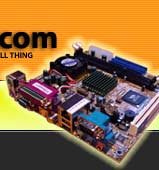|  | September 05, 2017
Choosing the right DC-DC PSU August 27, 2015
AMD's Project Quantum August 13, 2015
The Redstone PC is the ultimate Mini-ITX Minecraft Machine October 09, 2014
The "Restomod TV" April 09, 2013
Installing NAS4Free February 28, 2013
Building an XBMC 12 Home Theatre PC January 25, 2011
XBMC Guide updated to version 10.0 August 06, 2010
Building a Green PC February 15, 2010
Building an ION powered HTPC with XBMC October 10, 2008
The "Cambridge Autonomous Underwater Vehicle 2008" |
|  | | | September 12, 2008
"Florian", the DVD burning robot September 05, 2008
The "i-EPIA" May 22, 2008
The "GTA-PC" April 14, 2007
The "Digg" Case January 19, 2007
The "ITX-Laptop" December 07, 2006
The "Tortoise Beetle" October 02, 2006
The "DOS Head Unit" August 31, 2006
The "Janus Project" August 05, 2006
The "Leela PC" June 26, 2006
Nano-ITX in a Football May 17, 2006
The "EPIA Alloy Mod" April 11, 2006
Neatorama's Collection of Case Mods February 18, 2006
The "Rundfunker" October 24, 2005
The "ITX TV" October 06, 2005
The K'nex-ITX August 05, 2005
The "Waffle Iron PC" July 21, 2005
The "Supra-Server" July 18, 2005
The "Mega-ITX" July 07, 2005
The "Encyclomedia" May 25, 2005
The "Accordion ITX" |
|  | | | May 16, 2005
The "FileServerRouterSwitch" May 15, 2005
The "Mini Falcon" May 13, 2005
The "Bender PC" May 11, 2005
The "BBC ITX B" May 10, 2005
The "Frame" April 20, 2005
The "Jeannie" March 09, 2005
The "Cool Cube" January 30, 2005
First Nano-ITX Project? January 17, 2005
The "iGrill" January 15, 2005
The "Gumball PC" December 15, 2004
The "Deco Box" December 03, 2004
The "TERA-ITX" October 06, 2004
The "Coealacanth-PC" September 17, 2004
The "Gramaphone-ITX-HD" August 26, 2004
The "C1541 Disk Drive ITX" August 25, 2004
The "SEGA-ITX" August 13, 2004
The "Quiet Cubid" August 06, 2004
The "BMWPC" July 14, 2004
The "Moo Cow Moo" July 02, 2004
The "Mini Mesh Box" Full alphabetical archive on right hand side of page... |
|
|
EPIA MII 12000 Review
EPIA Benchmarks - Setup
Details
To keep results as consistent as possible,
we did a fresh install of Windows XP SP1 onto a Maxtor 160GB
HDD
drive, and applied recent security patches. Each board was tested
in turn. We used default BIOS settings on all boards - tweaking memory settings on EPIAs never improves benchmarks (we learnt this in our last multi-board benchmark session, and it is still the case today). Conveniently, 3 boards could use the EPIA MII VGA drivers, the MII boards and the EPIA TC. We used the XP
"rollback" feature to install the EPIA M and CL VGA drivers to prevent conflicts, though the CL functioned almost identically with the MII VGA drivers. After some initial testing, one stick of 256MB PC2100 DDR SDRAM was chosen for all the boards, apart from the EPIA TC (which takes an SODIMM - we used a 256MB stick).
All tests were conducted multiple times, to ensure accuracy.
Five 1000+ MHz CLE266 EPIAs
We decided to compare the EPIA MII 12000 with its closest cousins, the original EPIA M 10000, the twin LAN EPIA CL, the EPIA MII 10000 and the EPIA TC 10000 with built-in DC-DC converter. Each board has a 1Ghz C3 chip cooled by a 40mm fan (1.2Ghz in the case of the MII 12000). There are fanless 600Mhz Eden CPU versions of each board: the EPIA ME 6000, CLE 6000, TC 6000E and MEII 6000. All these boards use VIA's CLE266 chipset and share many supporting chips, so should give similar results.
Here's a brief overview and pictures of each board, so you know what we're talking about:
The EPIA M 10000
The Nehemiah version of the EPIA M 10000 was released in May 2003, designed for general purpose multimedia use, and was the first 1Ghz EPIA motherboard with a Nehemiah core C3 processor.
The EPIA CL 10000
The EPIA CL 10000 was released in September 2003, designed for communications and networking related uses, and is unique amongst current EPIA motherboards in that it has 2 x 10/100 LAN sockets.
The EPIA MII 10000
The EPIA MII 10000 was released in December 2003, a version of the EPIA M with additional expansion possibilities. An integrated PC CardBus / CF Reader daughterboard allows the inclusion of a PC Card (such as an 802.11 wireless card) and a Compact Flash card, both snugly fitting into the rear I/O panel next to the other connectors.
The EPIA TC 10000
The EPIA TC 10000 was released in April 2004, designed for mobile and space-saving applications due to its built-in DC-DC converter. The EPIA TC has a 12V DC input and requires a regulated power source from an external AC-DC adapter or 12V suppy. The EPIA TC has an SODIMM socket underneath the board, and comes in two versions - one with an integrated PC CardBus / CF Reader daughterboard as on the EPIA MII, and one without. Only the version without the daughterboard is generally available to distribution, the version with it is only intended for the IPC market (much like the EPIA PD is intended for POS devices)
The EPIA MII 12000
The EPIA MII 12000 was released in April 2004, and is not just a 1.2Ghz speed-bumped version of the EPIA MII 10000. It is the first EPIA motherboard to use the C5P version of the Nehemiah core, and the first C3 CPU to include VIA's Padlock Advanced Cryptography Engine.
Benchmarks - Sisoft Sandra -->
|
|







